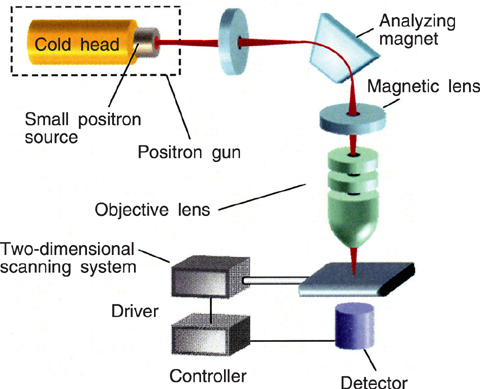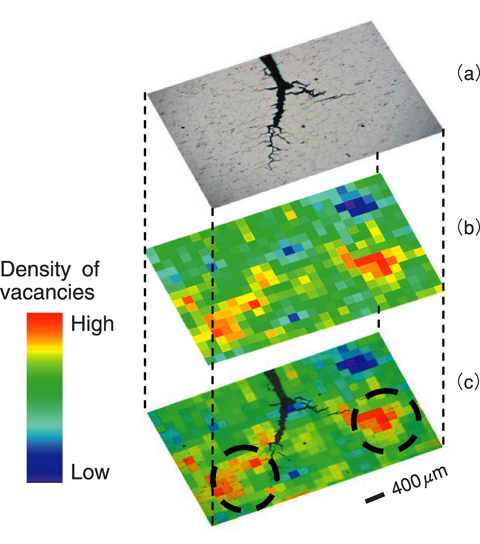
Fig.6-8 Schematic drawing of the positron microbeam apparatus

Fig.6-9
Positron annihilation method is a powerful tool to detect atom vacancies in solids. This technique is based on the unique property of positrons. That is, positrons get trapped by atom vacancies and annihilate with electrons to emit γ-rays. By measuring the annihilation γ-rays, vacancy defects are characterized. To implant positrons into a specimen at a controlled depth, positron beams are used. The diameter of a conventional positron source is, however, rather large and hence it is difficult to focus the beam down to a few microns. This means that measurement of vacancies in a specific area is impossible. In this study, we newly developed a positron source which is suitable for the formation of well-converged beam. Employing an objective lens, we succeeded in focusing a positron microbeam to a diameter of 1.9 microns. Using this microbeam, we can inject positrons in a certain small area only and evaluate vacancy type defects in that specific region. Moreover, combining a stage controller which can aim the beam at an arbitrary place on a sample, we constructed a scanning positron microscope which can obtain distributions of vacancy type defects beneath the surface (Fig.6-8).
Using this positron microscope, degradation of materials can be diagnosed through the observation of defects on the level of atom vacancies. Stainless steel, which is hard to corrode and tough is widely used as a structural material of nuclear power plants. The interior of the nuclear reactor is a severe environment, with high temperature, high pressure, and high radiation dose. In such extreme conditions, stress corrosion cracking (SCC) may occur. In order to secure the safety of nuclear reactors, understanding of detailed mechanism of crack progress is required. Using the positron microscope, we observed the tip of a crack formed in stainless steel by stress corrosion in an environment simulating a nuclear reactor (Fig.6-9). We then found that the density of atom vacancy type defects increased at the region beyond the tip of the crack. This is the world's first observation of atom vacancy type defects being formed before a crack grows.
Thus, the positron microscope can offer original information about atom vacancy type defects which are undetectable by conventional devices, such as the optical microscope and the electron microscope.
Present study is the result of "Innovative Nuclear Research and Development Program" entrusted to "Japan Atomic Energy Agency (JAEA)" by the Ministry of Education, Culture, Sports, Science and Technology of Japan (MEXT).